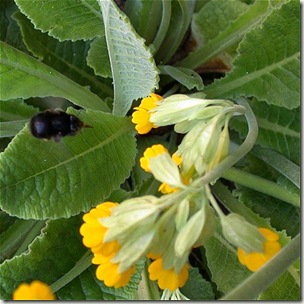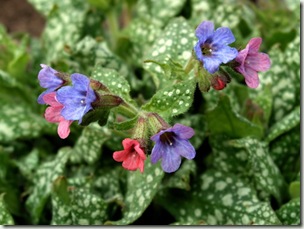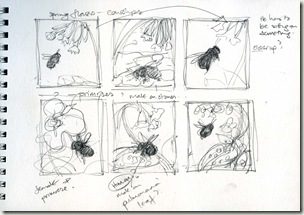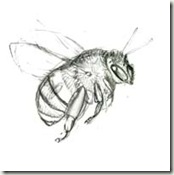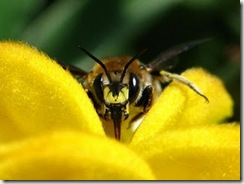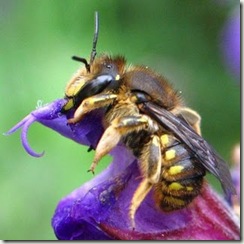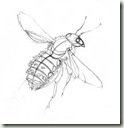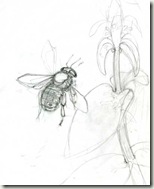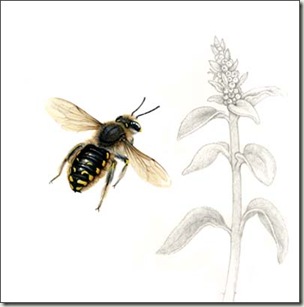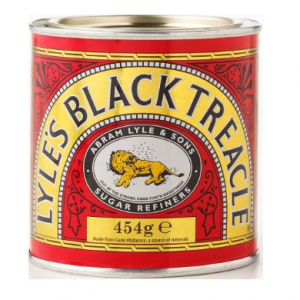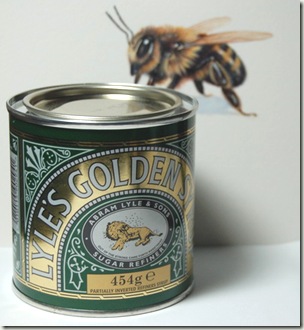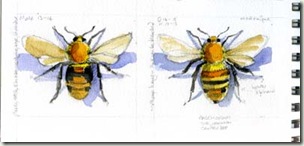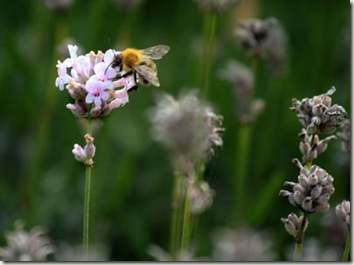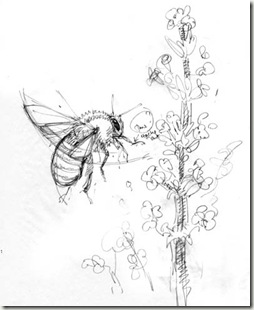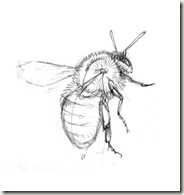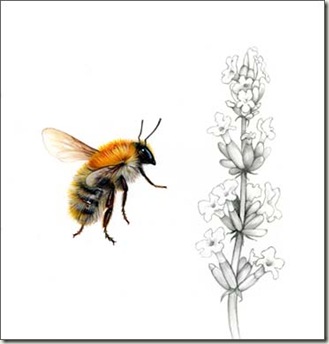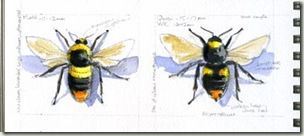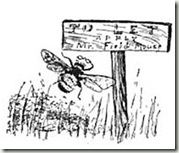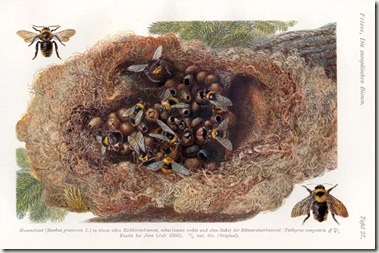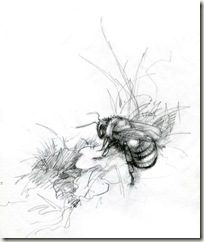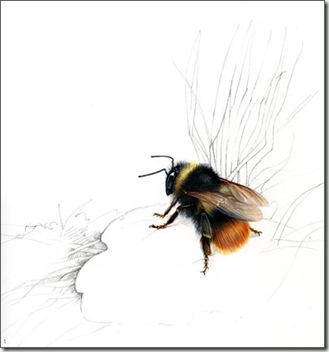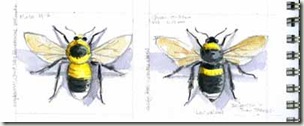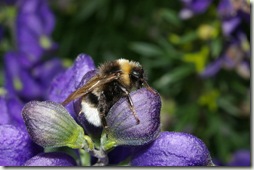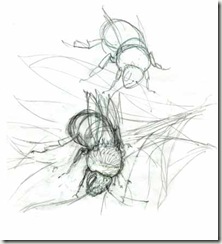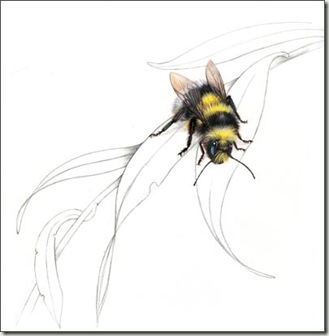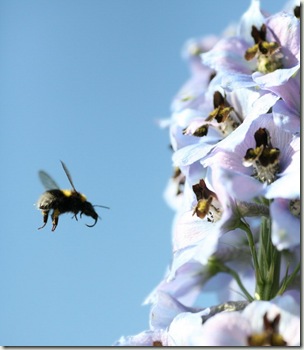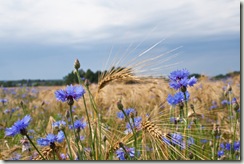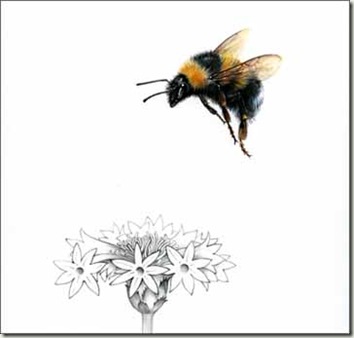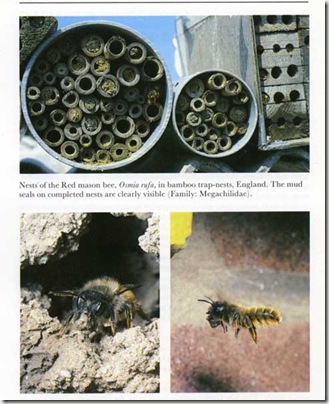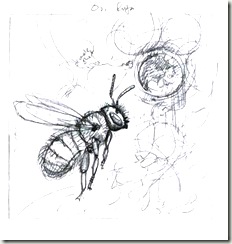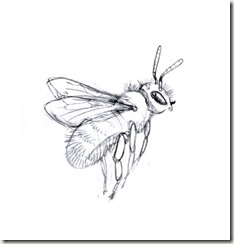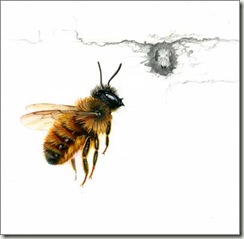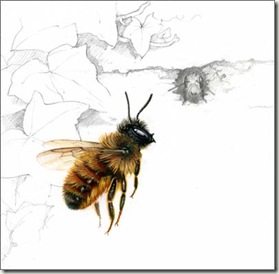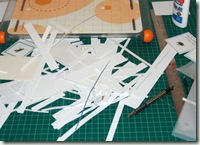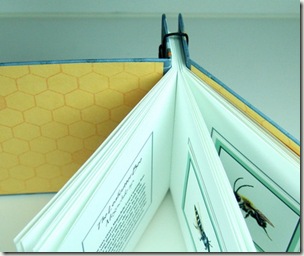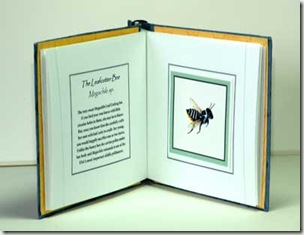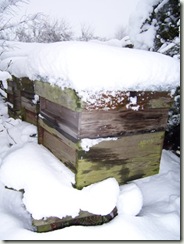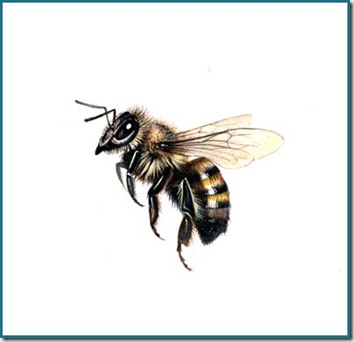I am revisiting the delightful Hairy Footed Flower Bee, Anthophora plumipes which I drew before back in November here. I wrote quite a bit about these funny little bees then and so won’t repeat myself, but here from the Natural History Museum identification sheet is a nice short description
“Large, long-tongued species resembling a small bumblebee; body length 14-17 mm. Female has body hair entirely black, outer surface of hind leg with golden hairs; body hair of male mainly a rich brown (face bright yellow). Common in gardens where it mainly visits deep-throated flowers. Cell walls consist of a conglomeration of fine particles of soil or mortar which are probably bound together by a secretion from an abdominal gland. This bee flies, with a shrill hum, from mid March to the end of May, rarely June. It is distributed throughout much of England and Wales (especially in the south); absent Scotland and Ireland.”
My real dilemma was which one to draw, the male or the female. I drew the male before because he is the one with the bizarre and wonderful feathery feet, lovely yellow markings on the face and a Roman nose. Below is a photo of the male, you can see the feathers on his front legs.
Male Anthophora plumipes , Photo Cosmin Manci from Shutterstock.com
The female could not be more different, they are mostly black and shaped like a little bomb. But they are really super sweet, whizzing around with their bright, ginger coloured legs.
They are early bees and so can be seen foraging on primroses, and a absolute favourite spring flower of mine, cowslips.
Here is a great photo from Brian Stones blog, “The Natural Stone”. In the post “Plenty in the Garden” from April 2005 a little female Anthophora is making, just as you would expect, a beeline, for the cowslips. This post also has two lovely frogs.. I do hope one day I get to paint some frogs .. Brian’s blog is full of wonderful photos and observations, I did particularly like the delightful bee flies here.
The Anthophora bees also like lungworts,or pulmonarias which have the same long tubular shaped flowers as the cowslips, whose deeply hidden nectar is easy for these long tongued species to access.
Beautiful pink and violet Pulmonaria, photo from “Sad” at Shutterstock here
If you would like to attract these super bees to your garden do go and read Blackbird’s post Flower Bee Garden.. April 2009 from her excellent Bugblog which I quoted from on the last post.
You will find a list of flowers that will have Hairy Footed Flower bees frolicking in your garden. What could be nicer?
The Painting
I just couldn’t decide between the wonderful spotted leaves of the lungworts or my favourite cowslips.
I left it, until I had no more time to decide and went for the cowslip flowers. The spotted leaves might just have been a bit too busy and distracting…. but I might just have to paint that little male bee again, perhaps displaying those lovely hairy feet on a nice spotted Pulmonaria leaf.
_____________________________________________________
Anthophora plumipes, The Female Hairy Footed Flower Bee and Cowslip.
I know the scientists may shrink in horror at the description, but this bee is just “too cute” for words!!
Watercolour and Pencil on Arches HP .. size approx 7×7 inches.


